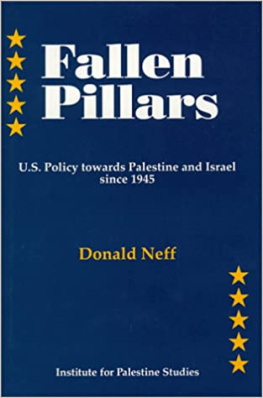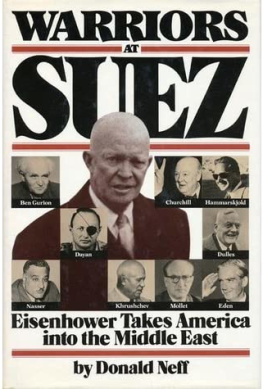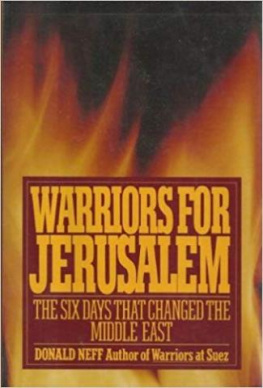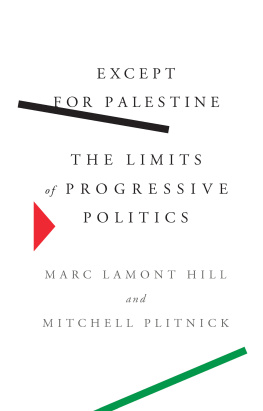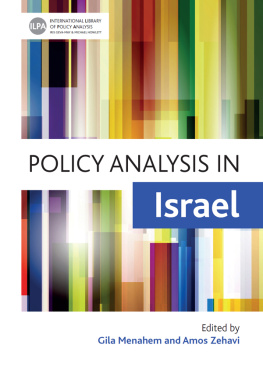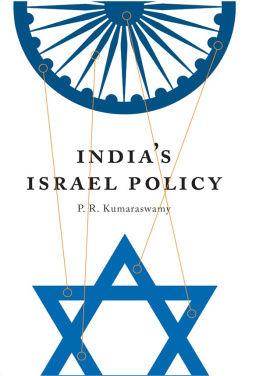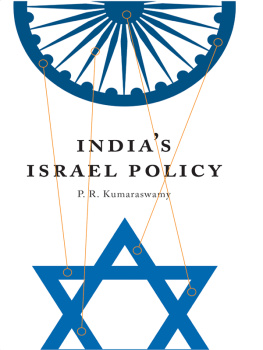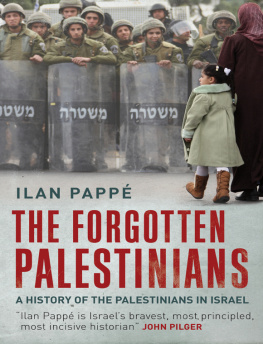FALLEN PILLARS
U.S. Policy towards Palestine and Israel since 1945
Donald Neff
Also by Donald Neff
WARRIORS AT SUEZ
WARRIORS FOR JERUSALEM
WARRIORS AGAINST ISRAEL
FALLEN PILLARS
U.S. Policy towards Palestine and Israel since 1945
Donald Neff
Institute for Palestine Studies Washington, D.C.
The Institute for Palestine Studies, founded in Beirut in 1963, is an independent nonprofit Arab research and publication center, not affiliated with any political organization or government. The opinions expressed in its publications do not necessarily reflect those of the Institute.
Copyright 1995 by the Institute for Palestine Studies All rights reserved.
LB. Tauris & Co., Ltd., London, is the exclusive distributor of IPS publications outside of North America.
Map is from The Birth of Israel: Myths and Facts by Simha Flapan. Copyright 1987 by Simha Flapan. Reprinted by permission of Pantheon Books, a division of Random House, Inc.
Portions of this book are taken from articles by the author that appeared in the Journal of Palestine Studies XXIII, nos. 1-4. Copyright 1993, 1994 by the Institute for Palestine Studies.
Library of Congress Cataloging-in-Publication Data
Neff, Donald, 1930 -
Fallen pillars : U.S. policy towards Palestine and Israel since 1945 / Donald Neff, p. cm.
Includes bibliographical references and index.
ISBN 0-88728-262-8. ISBN 0-88728-259-8
1. United StatesForeign relationsPalestine. 2. Palestine--Foreign relationsUnited States. 3. United StatesForeign relationsIsrael. 4. IsraelForeign relationsUnited States.
5. United StatesForeign relations1945-1993. 6. United States-
-Foreign relations1993- 7. Jewish-Arab relations1949-
I. Title. E183.8.P19N43 1995 327.7305609'04dc20
95-19904
CIP
Printed in the United States of America
CONTENTS
To three good men
George W. Ball, J. William Fulbright and Merle Thorpe Jr.
ACKNOWLEDGMENTS
Some of the material in this book first appeared in the Journal of Palestine Studies. I want to express my deep appreciation to the Journal's Associate Editor, Philip Mattar, for his consistent support and kindnesses, and to Managing Editor Linda Butler, who wields an editors blue pencil with enviable talent and patience. The same is true of Eric Hooglund, who edited this book. I would like to salute Dr. A. Afifi and the Diana Tamari Sabbagh Foundation, which a number of years ago gave me a research grant. Although this book was not what we had in mind at the time, it is the direct result of the studies that the grant allowed me to conduct. A salute is also due to my old friends Jim Abourezk and Murray Gart; my sister Mary Neff Somers; Braxton and Chase, the newest of the clan, and as always, to wonderful Abigail Trafford.
LIST OF APPENDICES
[All appendices come from the official Foreign Relations of the United States [FRUS] compiled by the State Department. The cited volumes are 1945: Volume VIII, The Near East and Africa; 1946: Volume VII, The Near East and Africa; 1947: Volume V, The Near East and Africa; 1948: Volume V, The Near East, South Asia and Africa, Part 2; 1949: Volume VI, The Near East, South Asia and Africa; and 1955: Volume XIV, Arab-Israeli Dispute 1955. All footnotes in appendices appear in the originals.]
4. Memorandum by the Chief of the Division of Near Eastern Affairs (Merriam) to the Director of the Office of Near Eastern and African Affairs (Henderson), Top Secret, Washington, D.C., December 27, 1946
12. Memorandum by the Department of State to President Truman [Refugees], Secret, Washington, D.C. [Undated but drafted August 19,
13. The Secretary of State to the Special Representative of the United States in Israel (McDonald) [Refugees], Top Secret, US Urgent,
18. Memorandum by the Acting Secretary of State to the President [State Department complaint about Israel], Top Secret, Washington, D.C.,
20. The Ambassador in France (Bruce) to the Secretary of State, From Ethridge, USDel at Lausanne commenting separately on Israel note,
PREFACE
The Six Pillars of U.S. Policy, 1897-1995
It was late in 1975 when the U.S. State Department announced that in many ways, the Palestinian dimension of the Arab-Israeli conflict is the heart of that conflict. 1 What was remarkable about the statement is that it had taken Washington so long to recognize the reality publicly.
The Palestinians, after all, were the victims and the warriors on the home front with Israel. It was their land and their homes, their flocks and businesses that were lost in 1948 with the establishment of Israel. That event resulted in well more than half of the Palestinians becoming stateless refugees and more than three-quarters of the land of Palestine falling under Israeli control. Nineteen years later, Israel captured the rest of Palestine and the remaining Palestinians fell under military occupation or joined the list of refugees. Even after Egypt, Jordan and other Arab states made peace with Israel or publicly accepted the Jewish state, it was the Palestinian claim to justice that kept the conflict simmering.
The magnitude of the Palestinian nakba, the catastrophe, as the Palestinians call it, can hardly be exaggerated, nor the uniqueness by which such a fate befell them. Within the span of one lifetime, the Arab majority in Palestine was dispersed or under military occupation or confined to second class citizenship in Israel and immigrant Jews, who had numbered no more than seven percent of the population at the beginning of the twentieth century and owned no more than one percent of the land, ruled supreme over all of Palestine by mid-1967.2
The point made by the 1975 State Department declaration, often forgotten, was that the core of what is usually called the Arab-Israeli conflict is in its essentials the Palestinian-Israeli conflict. Confusion about the origins of the conflict all too often has obscured Americans understanding of its true dimensions. It began as a conflict resulting from immigrants struggling to displace the local majority population. All else is derivative from this basic reality.
This is true of the general misperception that the conflict resulted from aggressive actions by Israels Arab neighbors, thus transforming the conflict into a war between states. But the Arab-Israeli conflict was a byproduct, not the primary cause, of the struggle over Palestine, a symptom rather than the disease. So too was the widely held misperception between the 1950s and the demise of the Soviet Union in 1991 that the conflict arose as a result of Cold War competition. True, these various aspects of the conflict took on a life of their own over the years, thereby adding complicating dimensions to the conflict that greatly confused the basic issue. But at its heart, and during the whole of its nearly century-old course, the essence of the conflict has remained the same: a struggle between the original Palestinian majority of Arabs to retain their status and land against waves of immigrant Jews laying a claim to their biblical heritage.
Next page
